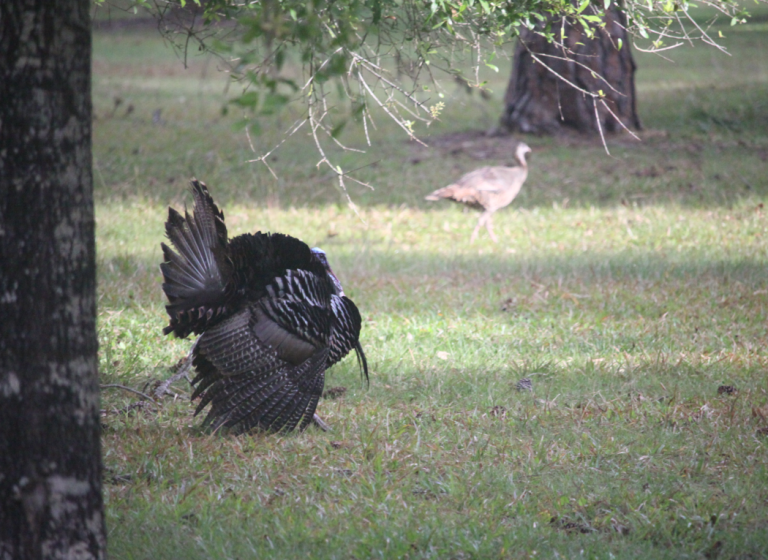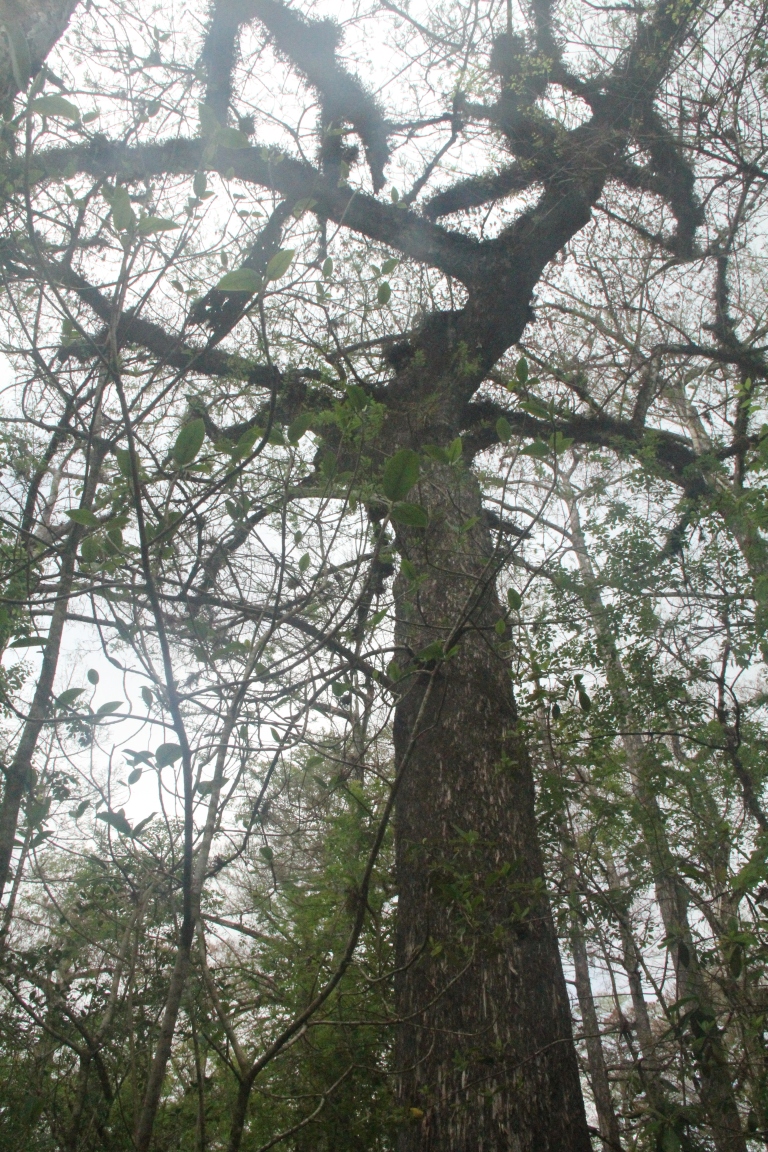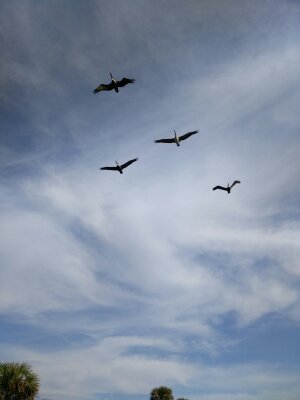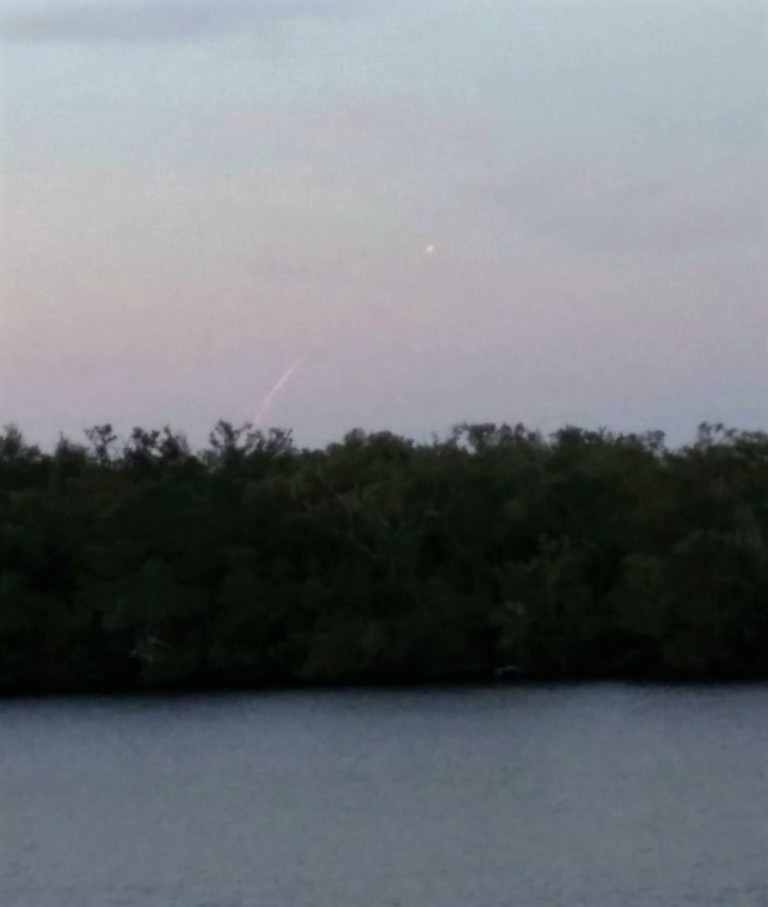Date: 4th March 2016 Temperature: 26ºC Weather: Cloudy with scattered showers
The day we went to Corkscrew Swamp and Barefoot Beach was a very full and satisfying day. It was amazing to walk through wetlands in the morning and have the contrast of visiting the beach and coastal species in the afternoon. On the way to Corkscrew Swamp we lucky enough see a male wild turkey (Meleagris gallopavo) doing what appeared to be a display for a female turkey.

Corkscrew Swamp
When we arrived at Audubon’s Corkscrew Swamp Sanctuary we received a quick talk about the site history from Rich, a member of staff on site. The sanctuary is located within Florida’s Big Cypress Swamp and the swamp contains the last remaining prestine ancient bald cypress with trees between 400-800 years old. As the name indicates the sanctuary is owned and operated by the National Audubon Society. The Audubon Society was first formed by Harriet Hemmingway as a way to protect plum birds in the early 1900’s.
As cypress (Cupressaceae spp.) is pest, fire, and rot resistant, that was logged in the 1940’s and 1950’s for the war. The pristine ancient cypress swamp was purchased from a logging company in December 1954 after raising $200,000 dollars. Thanks in part to the creation of the sanctuary, the area has not changed in 5000 years with the exception of the construction of the boardwalk that snakes through the sanctuary. Additionally, it is likely that the sanctuary will continue to remain the same as the sanctuary is protected for the next 5000 years.
Habitat
When walking on the boardwalk, it is easy to see the five major habitats that make up the sanctuary and how elevation affects those habitats. Although the sanctuary elevation only varies by 2 ft, those changes dramatically effect plant growth. At the highest elevation of 19ft above sea level near the visitor’s center, you can find the pine flatwood forest that benefits from a reduction in water level. As you move away from the visitors center the elevation decreases and the landscape transitions to a wet prairie, followed by pond cypress then bald cypress trees and finally central marsh in the lowest elevation of 17ft above sea level, where the greatest volume of water accumulates.
One thing that was unique about the habitats during our visit was the sheer volume of water. Due to the unseasonably high volume of rainfall that Florida has received during its dry season, the sanctuary habitats were as wet as they would normally be in the wet seasons. This begs the question of how the plants and animals will handle the water levels if they increase even further in the wet season.

Some of the plants found throughout the sanctuary include cabbage palm (Cordyline australis), swamp fern (Blechnum serrulatum), marsh fern (Thelypteris palustris), resurrection fern (Pleopeltis polypodioides), willows (Salix spp.), spider lily and tickseed (Coreopsis levenworthii). We also got to see some of the ancient bald cypress trees, as were indicated by placards explaining their name and history.
Wildlife
It should come as no surprised that there are a lot of bird species in sanctuary as it is the birds that were the original motivation for conserving the area. Some of the incredible bird species we saw include the wonderfully colourful painted bunting (Passerina ciris), Northern cardinal (Cardinalis cardinalis), indigo bunting (Passerina cyanea), red shouldered hawk (Buteo lineatus), American white ibis (Eudocimus albus), and red-bellied woodpecker (Melanerpes carolinus).
Unfortunately, I did not see many animals other than birds with the exception of a raccoon and an eastern grey squirrel.
Although simply spotting wildlife was interesting, it was more intriguing when a bird was spotted hunting. I was fortunate to catch this one two occasions. The first was an anhinga (Anhinga anhinga) hunting in an open pond. It would surface with a fish and toss the fish to change its angle in order to swallow it. The second occasion was a male great egret (Ardea alba). Its sex was identified by the lime green behind its eye called the lure which becomes increasingly greener as it becomes ready to mate. The egret was walking slowly hunting for fish and when it spotted a fish it rapidly lunged its head into the water.
Barefoot Beach
After Corkscrew Swamp we headed to the Barefoot Beach Preserve County Park for an educational and also relaxing afternoon. When we arrived at Barefoot Beach we visited an information center run by the Friends of Barefoot Beach Preserve that is an organization that helps to look after the preserve. The organization was first formed in 1990 when the three founders were walking along the beach and noticed an osprey (Pandion haliaetus) trying to build a nest. Efforts were then made by the group to construct platforms on top of the powerlines for ospreys to nest. Since then their efforts have expanded to the construction of various gardens and trails, hosting educational programs and tours and simply cleaning up the beach.

After looking around the information center, we had the opportunity to explore the beach and the boardwalks. While on the beach we were lucky enough to see several brown pelicans (Pelecanus occidentalis) hunting. They are the only pelican species that hunt by diving into the ocean which is made possible by air below their skin that reduce the impact.
When walking along the boardwalks there was an opportunity to see various interesting plant species including sea oats (Uniola paniculata) a sub-tropical grass species, sea grape (Coccoloba uvifera) whose grapes are favoured by raccoons, and a Florida strangler fig (Ficus aurea) wrapped around a cabbage palm. As the name implies, the strangler fig will grow up the host tree and “strangle” it until it does and the fig becomes a columnar tree with a hollow core.
One of the aspects I was most excited about at Barefoot Beach was seeing the gopher tortoise (Gopherus polyphemus). They are a keystone species in Florida and this is due to the fact that they construct large, deep burrows. Those burrows then become a place for wildlife to escape and be protected during the many wildfires that naturally occur in the area. Many of the species that use the burrows are endangered such as the burrowing owl (Athene cunicularia), gopher frogs (Rana capito), and indigo snakes (Drymarchon couperi).
Although I loved our time at Barefoot Beach, the highlight of the day was by far Corkscrew Swamp and that was simply because of how being surrounded by water, plants and animals made me feel relaxed and at peace.
Below is a video of one of the ways brown pelicans dive. This isn’t the high diving we saw while at the beach but it is still very interesting. You can even see the fish moving in its pouch.
At the very end of the day we also got an extra surprise; we got to witness the Falcon 9 rocket that we saw while visiting the Kennedy Space Centre on the first day launch from Cape Canavaral. It was incredible knowing that we witnessed a part of space exploration history.

I will leave you with a video posted shortly after our visit that show you just how wild Corkscrew Swamp is, even if the boardwalks make it feel safe.
References
Audubon Date Unknown. Audubon’s Corkscrew Swamp Sanctuary . [Online]. Available at: http://fl.audubon.org/chapters-centers/audubons-corkscrew-swamp-sanctuary. Accessed: April 12 2016.
Audubon Date Unknown. Corkscrew Swamp Sanctuary : Natural History. [Online]. Available at: http://corkscrew.audubon.org/conservation/natural-history. Accessed: April 12 2016.
Friends of Barefoot Beach Preserve 2016. Welcome to Beautiful Barefoot Beach Preserve. [Online]. Available at: http://www.friendsofbarefootbeach.org/. Accessed: April 11 2016.
Savannah River Ecology Laboratory Date Unknown. Gopher Tortoise (Gopherus polyphemus). [Online]. Available at: http://srelherp.uga.edu/turtles/goppol.htm. Accessed: April 12 2016.
The Biomimicry Institute 2016. Body Protected from Diving Impact : Brown Pelican. [Online]. Available at: http://www.asknature.org/strategy/9b65401375c881b12025497fe7379672. Accessed: April 13 2016.
The Editors of Encyclopedia Britannica 2016. Strangler Fig. [Online]. Available at: http://www.britannica.com/plant/strangler-fig-tree. Accessed: April 12 2016.














One thought on “Corkscrew Swamp and Barefoot Beach”